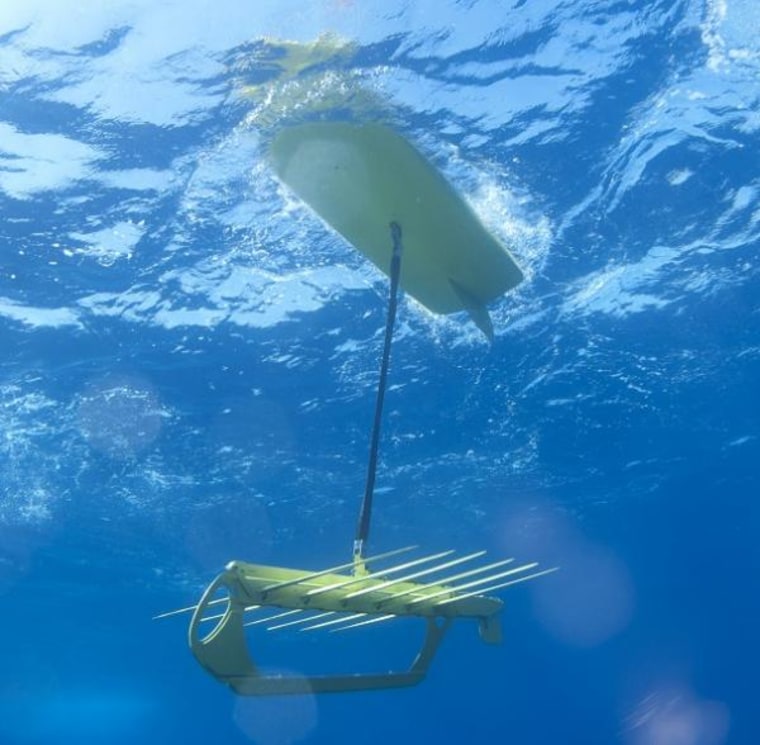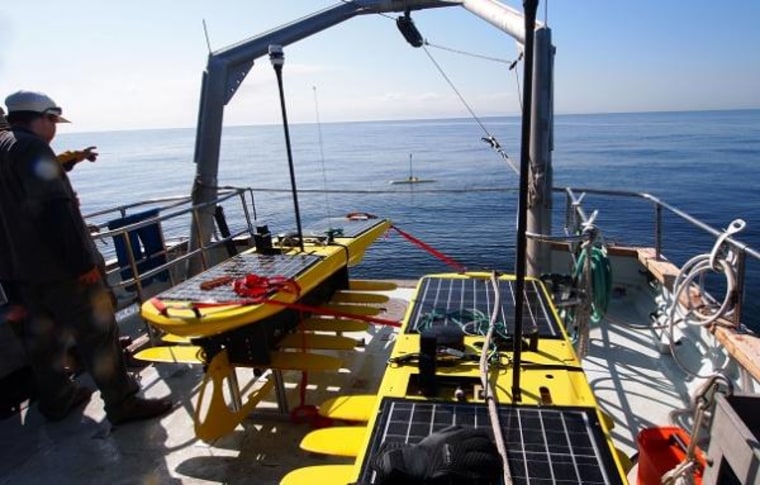More than 500 years after Ferdinand Magellan's expedition crossed the Pacific Ocean on its way to circumnavigating the globe, robot explorers have also begun to leave their watery mark on the world. Four "Wave Glider" drones took aim at a new distance record for unmanned ocean vehicles by launching on a trans-Pacific voyage from San Francisco last Thursday.
The Wave Gliders could set a Guinness World Record by traveling across 33,000 nautical miles of the Pacific during a voyage expected to take more than 300 days. That would not only beat previous records set by underwater drones that have already crossed the Atlantic Ocean, but could also allow for new scientific discoveries in the largely unmapped ocean frontier.

Anyone can follow the journey virtually online courtesy of Liquid Robotics — the company operating the Wave Gliders — and Ocean in Google Earth. Liquid Robotics has also teamed up with Virgin Oceanic to begin exploring the deepest part of the world's oceans in the Mariana Trench.
"Most of the ocean remains unexplored with less than 10 percent of it mapped out," said Jenifer Austin Foulkes, Ocean in Google Earth manager. "This expedition creates an opportunity for students, marine researchers and aspiring oceanographers to follow these brave Liquid Robotics ocean robots as they cross the Pacific virtually through the Ocean Showcase on the Google Earth website."
Once the drones reach Hawaii, one pair will continue onward to Japan by crossing over the Mariana Trench. The other pair is scheduled to head for Australia.
Each drone consists of a floating section connected with a cable to an underwater glider, so that it can convert wave motion into forward thrust. Such self-sustaining design has already allowed Wave Gliders to complete individual voyages of more than 2,500 miles since 2008.
Solar panels on top of the floater can supply power to onboard sensors designed to track ocean salinity, water temperature, waves, weather, fluorescence and dissolved oxygen. The Wave Gliders can transmit the data to shore by passing it on to satellites.
The public can access such data for free if they register, but Liquid Robotics has also invited scientists to submit research proposals describing how they would use the data in a newly announced PacX Challenge. A grand prize winner chosen by ocean scientists will receive six months of free Wave Glider data services and help Liquid Robotic plan out the six-month deployment.
"These Wave Gliders are much like small 'spacecraft' that open up new opportunities for robotic exploration," said Ed Lu, chief of innovative applications at Liquid Robotics. "I challenge all scientists who are interested in advancing ocean exploration to take advantage of this unique opportunity."
Follow InnovationNewsDaily on Twitter @ News_Innovation, or on Facebook.
